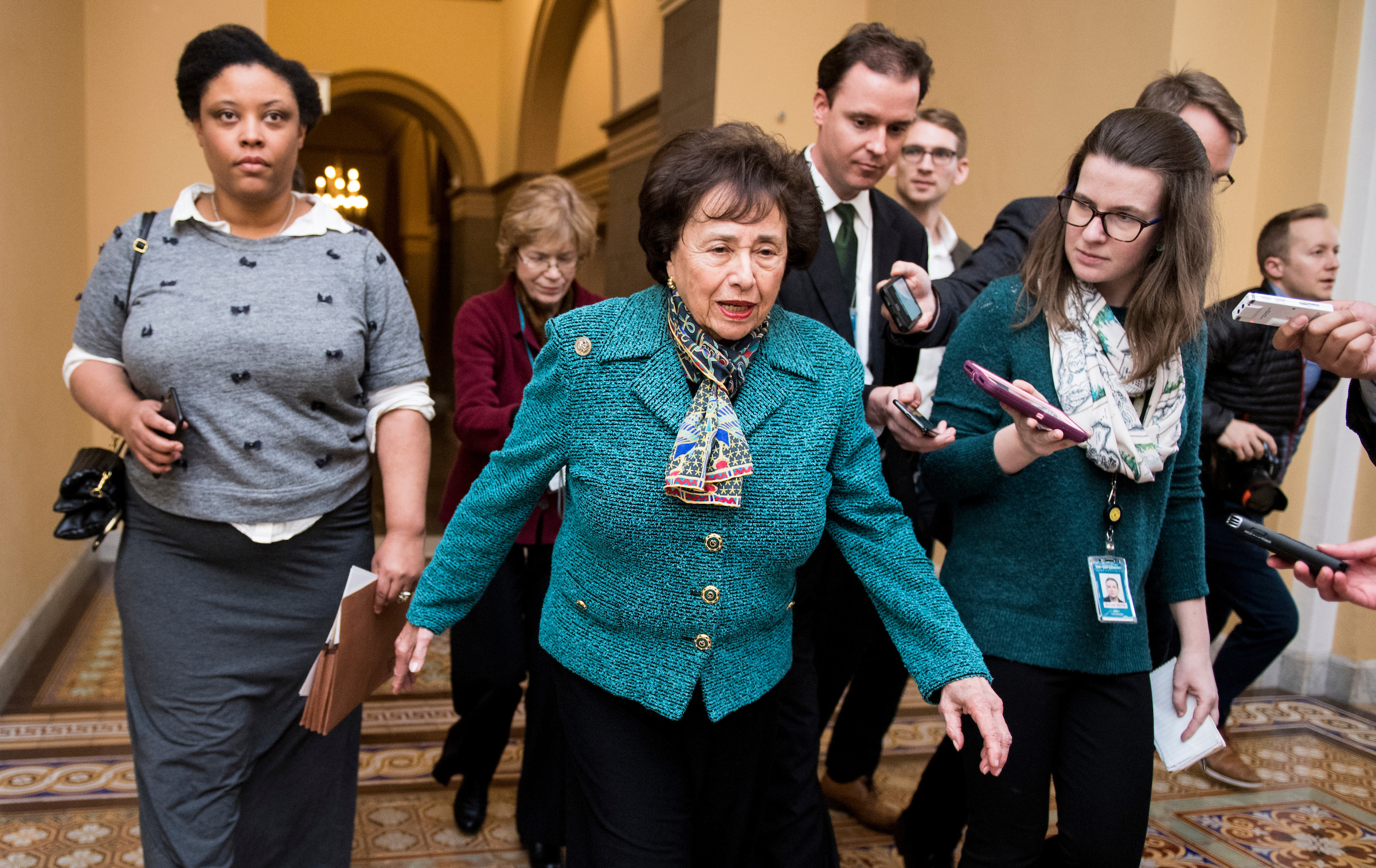House Appropriations may start markups in April
Markups have to begin in April or May at the latest to have any chance of bills passing on the floor in June

House Appropriations Chairwoman Nita M. Lowey and Democratic appropriators are looking at starting fiscal 2020 markups as soon as late April with the Defense, Labor-HHS-Education and Legislative Branch bills, people familiar with the process said.
The Military Construction-VA and Energy-Water bills also are on tap to be among the first five bills marked up, as part of an effort to begin advancing bills across the floor in June.
The schedule is not final, and changes could be made, including beginning markups with Military Construction-VA and Energy-Water.
“Chairwoman Lowey is committed to a responsible and orderly appropriations process,” said Evan Hollander, a spokesman for the New York Democrat. Hollander added that Majority Leader Steny H. Hoyer, D-Md., “has been clear that he wants to pass appropriations bills on the floor in June, and the Committee looks forward to expeditiously marking up bills to fulfill that timeline.”
Markups have to begin in April or May at the latest to have any chance of bills passing on the floor in June.
Democrats are considering advancing appropriations bills in small packages, as Republicans did last year when they were in the majority, a senior Democratic aide said.
Democrats also are looking at pairing Defense and Labor-HHS-Education on the floor, a person with knowledge of the process said. That pairing served the interests of both parties last year, providing Republicans with a guarantee that sufficient funds would be appropriated for the military, while giving Democrats assurance that the largest domestic spending bill would not get shortchanged.
That, in turn, puts the focus on House Budget Chairman John Yarmuth’s effort to see if enough Democrats potentially support a fiscal 2020 budget resolution to make it worth marking one up in committee.
Democrats face internal divisions over the spending, taxes, deficits and policies that should be reflected in a budget, leading some aides to believe there is almost no chance such a blueprint has enough support to be brought to the floor.
If a budget resolution can’t get enough support to be adopted, Yarmuth, D-Ky., might opt not to mark one up. Yarmuth last week put the chances of House adoption of a budget at “50-50.”
Watch: Why presidential budget requests are usually dead on arrival, explained
Separate tracks
One idea under consideration by House Democrats is for the Budget Committee to mark up regular legislation raising the discretionary spending caps for one or two years in lieu of a budget resolution.
That bill could be combined with what is known as a deeming resolution, which would set enforceable spending limits on defense and nondefense spending, allowing Lowey to divide those topline spending limits into subcommittee allocations.
An aide to the House Budget Committee declined to comment on the possibility of the committee marking up a caps bill rather than a budget resolution.
Legislation to raise the caps would have to be passed by Congress and signed by President Donald Trump eventually to avoid across-the-board cuts known as a sequester, which would otherwise be triggered 15 days after the end of the congressional session, likely in January.
Congress and the White House have previously negotiated three separate agreements to raise the caps for two years at a time, with the latest agreement covering fiscal years 2018 and 2019.
Now that the House is under Democratic control, House Speaker Nancy Pelosi could advance a caps-raising bill as one chamber’s view of how much the defense and nondefense limits should be increased — serving as a public, opening bid in the absence of a congressional agreement.
House passage of caps-raising legislation and a defense bill that largely meets the priorities of the White House could pressure Trump to entertain a caps deal. In his fiscal 2020 budget, Trump asked for $750 billion for the military. At the same time, the budget proposed reverting to the lower statutory fiscal 2020 defense and nondefense caps, while bolstering defense with $174 billion in war and emergency funding that is outside them. Trump has said he is opposed to raising the caps this time around.
Senate appropriators are widely expected to mark up their bills at fiscal 2019 levels, but no final decision has been made.
If Yarmuth decides not to mark up a budget resolution, Democrats are likely to argue that there was little chance the GOP-led Senate and Democratic House could bring a budget to conference. They also may point out that a budget resolution alone could not raise the statutory spending caps, while regular legislation can do that.





